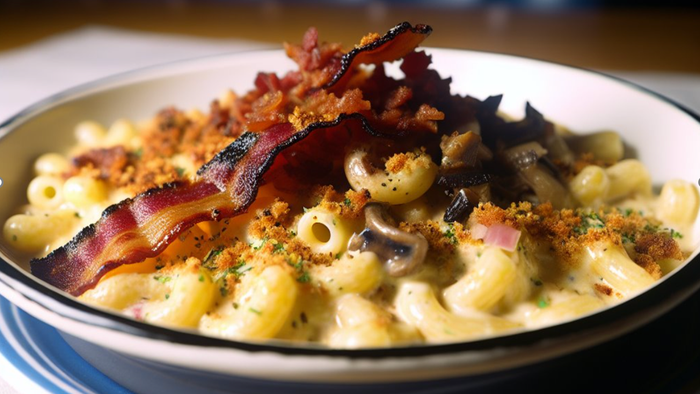January 10, 2022

Editor's note: This is Part 2 of our State of the Industry 2022. Read Part 1 here.
In the Fall issue of Catersource, Carl Sacks, Executive Director for Leading Caterers of America, offered mid-year predictions regarding how he felt the remaining few months of 2021 would unfold. “There has been a massive buildup of asset-based household wealth in the U.S.,” he noted. “This is in part because of the remarkable (and sometimes perplexing) runup in the stock market [up to mid-Q3], and because of spending deferred during the pandemic. Most U.S. workers, particularly in white collar jobs, have remained employed during the pandemic. They have been banking a lot of their pay due to deferred spending on vacations, restaurant meals, sports and entertainment, and other typical activities.”
Has the spending begun? Have catered events of all kinds returned?
As the end of 2021 arrived, we spoke (and listened) to several executives from across the U.S. offering their take regarding various aspects of catering business. Here’s a recap:
Life cycle events & social entertaining
In early Q3, Sacks pointed to a robust recovery of weddings, quinceañeras, mitzvahs, and other social events. “Some of these have been rescheduled from the pandemic months, but much of this business is just part of the typical flow of life.” He also noted that social entertaining “will start to recover substantially.”
This prediction was recently echoed by The Wall Street Journal on November 28, when it published, “Planning a Wedding for 2022 May Be Harder than Finding Your Soul Mate”—citing that wedding planners and vendors across the U.S. are reporting record numbers of inquiries and bookings through 2024. The article cited projections from The Knot website, which stated “an estimated 2.6 million weddings will take place in the U.S. in 2022, a record high. Around the same number of weddings have been set in 2021, leading to vendors and venues finding themselves overbooked and, in some cases, increasing prices.”

A wedding from Grande Affaires, A Social Division of DECO Productions, was scheduled for May 2, 2020 and was postponed due to COVID-19. the Wedding instead took place on August 8, 2020 with a smaller guest list. Photo courtesy Mandy Lynn Photography
Sacks remarked that in a show of hands at a recent Q4 meeting for on premise caterers, most of them “are so booked [for weddings] that they can’t find the space to accommodate them all.”
This is certainly true in Cincinnati, where the three venues owned by Funky’s Catering are 82% booked. A fourth is opening soon and Principal Michael Forgus hopes the backlog of inquiries will ease into that venue as well. “I’ve never been this far booked in advance at this time for the upcoming year. I think weddings are going to stay strong through 2023.”
At the Connecticut Wedding Group, “not only are we booking these dates,” says Executive Vice President Jonathan Jennings, “but we are booking them at a higher price point than before. …As couples fill in the details of their weddings, they’re spending money.” Jennings points to the pent-up demand from 2020 and 2021. “A lot of these people extended their engagements, and it just seems like everybody is ready to spend money…buying all of the options and amenities that are available, buying the best of everything. We’re very hopeful that it will transition into a very nice year next year.”
At Divine Events in Las Vegas, Sales Director Rebecca Gullixson has seen in the last quarter of 2021, “an uptick in higher dollar, higher volume celebrations of life. Really going all out, pulling out all the stops with bar packages and action stations, the whole nine yards. Really celebrating the occasion.”
On the East Coast, says Robin Selden, “clients are looking for different and exciting things to electrify their guests, we’re doing a lot of celebrity work, we’re bringing in name acts—because they just have the money to spend. We’re also doing a lot of destination stuff, which is not our forte, but we’ll take it! We had three destination weddings in one weekend because of COVID and all the changes of dates; it’s crazy stuff but really exciting.”
Says Sacks, “Clearly, there are a lot of rich people in this country who have more money than they know what to do with.”
Fundraisers & galas
“Fundraisers and galas are already happening [in 2021],” said Sacks earlier this year, “sometimes as hybrid events, and sometimes as face-to-face events. It will probably be 2022 before we start to see fully reloaded gala schedules.”
And, despite that New York City typically holds galas during the week, much of the rest of the country points to weekends as gala fundraiser prime time—especially during prime wedding season.
This concern was echoed by Lizzy Desibia, Vice President, Russell Morin Catering & Events in Massachusetts: the request from clients to push their non-profit galas into Q3 (prime wedding season) has created a conundrum. Keep the corporate client or decline a lucrative wedding contract?

a virtual fundraiser treat box from Marcia Selden Catering . Photo courtesy Jeffrey Selden
In the Dallas area, Craig James noted that non-profit events are back and are even 50% higher in attendance than pre-COVID. “What used to be a 300- to 400-person event is now a 600- to 800-person event.” What makes the event most challenging? Budgets for non-profits remain at pre-COVID levels. More people, same amount of spend.
In the Midwest region, non-profit events are returning with average guest counts. Major corporations, however, are not expected to return to events until January 2022.
In Portland, OR, Fortuna notes that much of VT Group’s non-profit business has moved into “some kind of virtual or hybrid event” where “maybe 100 people will be at an event and the rest of them will be online in some way or another.” He notes that before the variant took hold, there was a surge of activity in the summer, but the company returned to virtual models into Q4. “It’s a roller coaster.”
In the Los Angeles area, 800 employees working a recent event were required to be PCR Rapid tested on site as well as provide proof of vaccination to even walk on the property. Everyone is doing this “at an extremely high cost,” notes Neubauer, “but it’s reducing other parts of the budget. Clients are allocating $30,000 to $40,000 on the event just to manage the COVID protocol.”
In the Midwest, Catering Creations’ Sous Chef Jenny Bast said that outdoor tented events have been successful…maybe too successful in one instance. “We had a turn-out of 600 people when we were expecting 400.” At that event, no proof of vaccination was required. A second event, however, which did require POV, had average attendance. The spring season of 2022, she commented, looks very positive for non-profit work.
The foreseeable future
As the country emerges from the pandemic, challenges remain high for every company, no matter what region of the country one is located in. Supply chain issues, staffing depletion, artificial intelligence shaping the workforce to tackle tasks faster and more cheaply, deciding whether the retention of certain aspects of pandemic business such as virtual and hybrid events is worth keeping, and whether minimum wage increases will impact companies heavily are many of the lingering thoughts. Time will tell.




.png?width=700&auto=webp&quality=80&disable=upscale)
.png?width=700&auto=webp&quality=80&disable=upscale)

